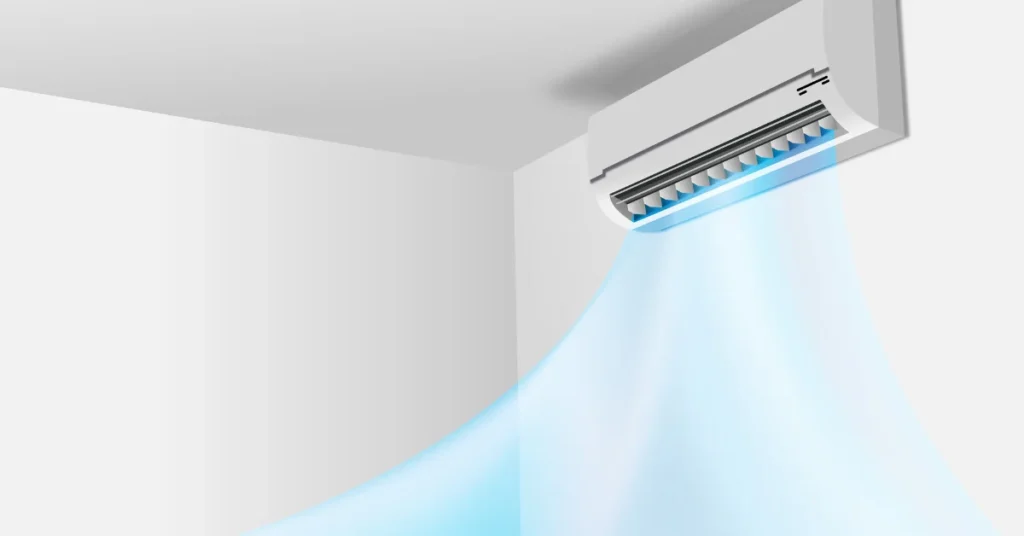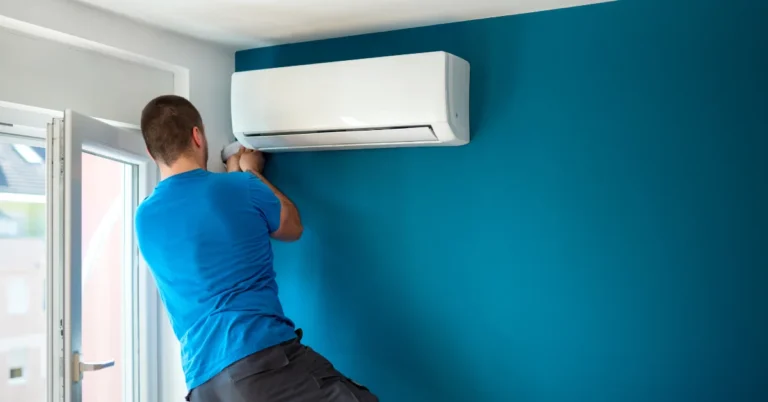Ever wondered if your window AC is doing more than just cooling your home? You might be surprised to learn that while most window air conditioners help remove some moisture from the air, they might not be the all-in-one solution for your humidity problems. Especially if you live in a particularly humid area, that moisture could still be sneaking back in, causing issues like window condensation, mold, or that sticky, uncomfortable feeling inside your home.
So, does a window AC dehumidify, and if so, how effectively? In this post, we’ll break down how these units work, why your AC might not be doing enough to reduce humidity, and whether you should consider other options like dehumidifiers or mini-split systems to tackle the problem. Let’s dive into everything you need to know!
When a Window AC May Not Be Enough for Dehumidifying
While your window AC can help reduce some moisture, there are several reasons why it might not be enough to fully manage humidity in your home. Here are a few common issues:
- Improper Unit Size: An AC that’s too small for the room won’t effectively cool or dehumidify the space. On the other hand, an oversized unit may cool too quickly without running long enough to remove much moisture, leaving the air damp and uncomfortable. Getting the right size unit for your room is key to balancing temperature and humidity.
- Clogged Filters: Dusty or clogged filters can prevent your AC from working at full efficiency. If the unit can’t properly circulate air, it will struggle to remove humidity. Make sure you’re cleaning or replacing the filters regularly to keep your AC functioning well.
- Excess Moisture: If your home or region is extremely humid, the dehumidifying power of a window AC simply may not be enough. High humidity can cause condensation on windows, mold growth, or even that muggy feeling inside. In these cases, you might need extra help from a dedicated dehumidifier.
- Wrong Thermostat Settings: If your thermostat is set too low, your AC may not run long enough to effectively remove moisture. Try adjusting the settings to allow the unit to run for longer periods, which can help with dehumidification.
Does Dry Mode on AC Dehumidify?

Many modern window AC units come with a feature called “dry mode.” But what exactly is dry mode, and how does it help with dehumidifying your home?
Dry mode is a setting designed specifically to reduce humidity without cooling the room as much as regular AC mode. When you switch to dry mode, the unit runs the fan at a slower speed, allowing the air to pass over the cool evaporator coils more slowly. This process helps remove more moisture from the air without significantly dropping the room’s temperature.
So, yes, dry mode does help dehumidify. However, it’s best used when you’re dealing with moderate humidity levels. If you’re living in a highly humid area or facing extreme moisture issues, you might still need a dedicated dehumidifier to get the job done more efficiently.
Does a Mini Split Dehumidify?
If you’re looking for an alternative to a window AC, you might be considering a mini-split system. These systems are growing in popularity for their efficiency and versatility, but do they also help with dehumidifying your home?
The answer is yes—mini-split systems can dehumidify. In fact, they often perform better at dehumidification than window AC units. This is because mini-splits typically run for longer periods at lower power, maintaining a more consistent temperature and airflow. This extended operation gives them more time to remove moisture from the air, making them effective at controlling humidity.
Many mini-split systems also come with a “dry mode” specifically designed for dehumidifying, similar to window AC units. However, because mini-splits are generally more powerful and efficient, they tend to be a better option for homes in very humid environments.
That said, like any AC unit, a mini-split isn’t a complete replacement for a dedicated dehumidifier if you have severe moisture problems. But in most cases, a mini-split can keep your home cool and comfortably dry.
Do Dehumidifiers Help with Window Condensation?

One of the most obvious signs of excess humidity in your home is condensation forming on your windows. This happens when warm, moist air inside the house meets the cooler surface of the window, causing water droplets to form. Over time, this can lead to issues like mold growth, water damage, and even a musty smell in your home. So, can dehumidifiers help with this problem?
Yes, dehumidifiers are an excellent solution for managing window condensation. By actively pulling moisture out of the air, a dehumidifier lowers the overall humidity level in the room, reducing the chances of condensation forming on the windows. This is especially helpful during cooler months when the contrast between indoor and outdoor temperatures can be greater, causing more condensation.
While a window AC can help somewhat, it may not always be sufficient to control high moisture levels. A dehumidifier, on the other hand, is specifically designed to manage humidity and is often the most effective way to keep condensation and its related problems at bay.
Why Is My AC Not Dehumidifying?
If you’ve noticed that your AC isn’t effectively dehumidifying, you’re not alone. There are several reasons why your window AC might be struggling to remove moisture from the air. Here are a few common issues:
Clogged or Dirty Filters: If your AC filters are clogged with dust and dirt, airflow is restricted, making it harder for the unit to pull moisture from the air. Regularly cleaning or replacing your AC filters can dramatically improve performance, both in cooling and dehumidifying.
Wrong AC Size: An AC that’s too large for your room will cool the space too quickly, but it won’t run long enough to remove much moisture. On the flip side, a unit that’s too small will struggle to handle the cooling and dehumidifying load, leaving your room both warm and humid. Choosing the right size unit is crucial for maintaining the ideal balance.
Low Refrigerant Levels: If your AC is low on refrigerant, it won’t cool or dehumidify effectively. Refrigerant is essential for absorbing heat and moisture, so if your unit is running low, it may be time for a professional tune-up to check for leaks or refill the refrigerant.
Thermostat Settings: Your thermostat settings can also impact how well your AC dehumidifies. If the temperature is set too low, your AC might not run long enough to remove moisture. Try raising the temperature slightly and letting the unit run longer to see if it helps.
Excess Humidity Levels: In extremely humid climates or during rainy seasons, even a well-functioning AC may not be able to keep up with the moisture in the air. In these cases, adding a dehumidifier can make a huge difference in overall comfort.
Conclusion
While a window AC can help with dehumidifying your home, it may not always be enough, especially in highly humid environments. Window AC units remove some moisture from the air as part of the cooling process, but they aren’t specifically designed to tackle serious humidity issues. Features like “dry mode” can enhance their dehumidifying abilities, but in many cases—such as persistent window condensation or extreme humidity—you might need a dedicated dehumidifier for optimal results.
If you find your AC struggling to keep moisture under control, it may be due to factors like improper sizing, clogged filters, or high humidity levels. Whether you choose to adjust your AC settings, invest in a mini-split system, or add a dehumidifier, taking control of your home’s humidity can lead to a more comfortable and healthier living environment.




